Lenovo Legion 5 (2021) Review
Can Lenovo's subtle gaming laptop stand out from the crowd?
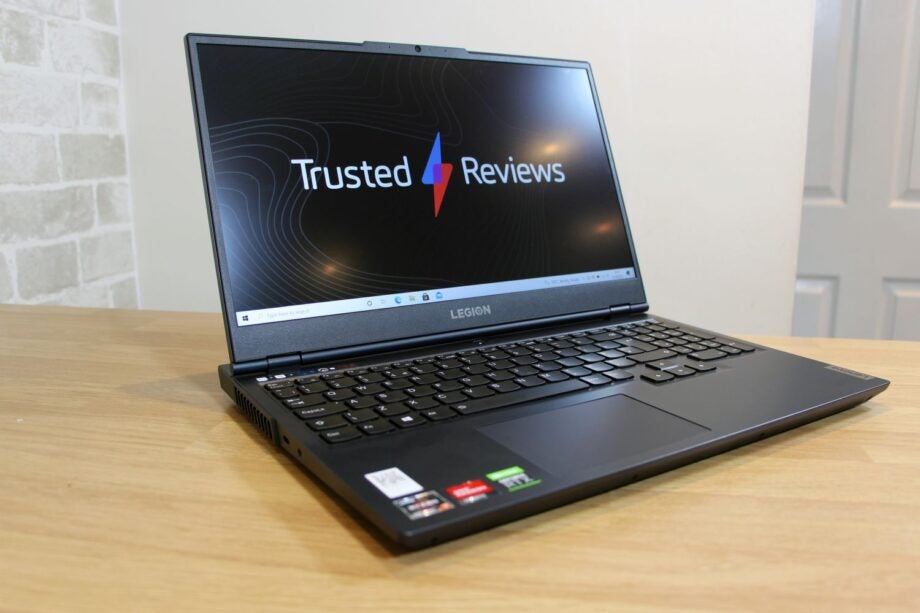
Verdict
The Lenovo Legion 5 offers well-balanced and impressive speed alongside good thermal performance, an impressive keyboard and a subtle design that’s packed with ports – and it’s often cheaper than rivals. But remember that this machine is heavier and thicker than the competition and that it’s got an underwhelming display, too.
Pros
- A great CPU and a smooth, capable graphics core
- Understated and robust design
- High-quality keyboard
- Loads of ports
Cons
- Underwhelming display
- Mediocre battery life
- Thicker and heavier than competitors
Availability
- UKRRP: £1399
- USARRP: $1999
- EuropeRRP: €1799
Key Features
- Top-notch internalsThe Nvidia GeForce RTX 3070 and AMD Ryzen 7 5800H deliver great all-round performance, especially considering the price
- A smart, subdued designThe Legion looks subtle, with a dark body that doesn’t have any silly gaming additions – ideal if you want a more discreet laptop.
- Loads of practical featuresThe Legion has a great keyboard, reasonable battery life and loads of ports, so it’s a good option for versatile everyday computing.
Introduction
The Lenovo Legion 5 is an impressive gaming laptop on paper, with high-end components throughout, but it’s going to have to work hard when lined up against some strong rivals.
Lenovo’s latest laptop gets off to a good start with an Nvidia RTX 3070, and the GPU is bolstered by an AMD Ryzen 7 5800H which is one of the most popular laptop chips on the market right now.
And in the UK, at least, the Legion is available at a brilliant £1399 price, making it one of the cheapest laptops around with this level of hardware. In the US you’ll have to pay $1999 for this machine, which is a little expensive, and in Europe the Legion is available for a mid-range €1799.
Keep an eye on the big retailers, though: prices drop all the time, and the Lenovo could easily become a bargain in the US and Europe alongside the UK. And, if that’s the case, it’ll have even more of a claim to a spot in our best gaming laptop chart.
Lenovo’s machine squares up against two other big names. The MSI Katana GF66 uses an Intel processor and an RTX 3060 graphics core, but it’s more affordable: it costs £999 / $1399 / €1482. If you’re comfortable spending more, then there’s the Asus ROG Strix G15 G513, too, which matches the Lenovo’s core components for a price of £1699 / $1999 / €1999.
Design and keyboard
- Smart, subtle design with decent build quality, albeit in a heavy frame
- Has great connectivity, with more ports than virtually any other laptop
- Lenovo’s keyboard is typically excellent: fast, consistent and comfortable
Lenovo’s machine doesn’t look like a gaming laptop. The lid and body use matte black metal and plastic, and there are no odd angles or RGB LEDs – just an extended section at the rear to house extra cooling gear.
The only gaming-friendly design is the lid’s Legion logo, which has a great-looking iridescent sheen.
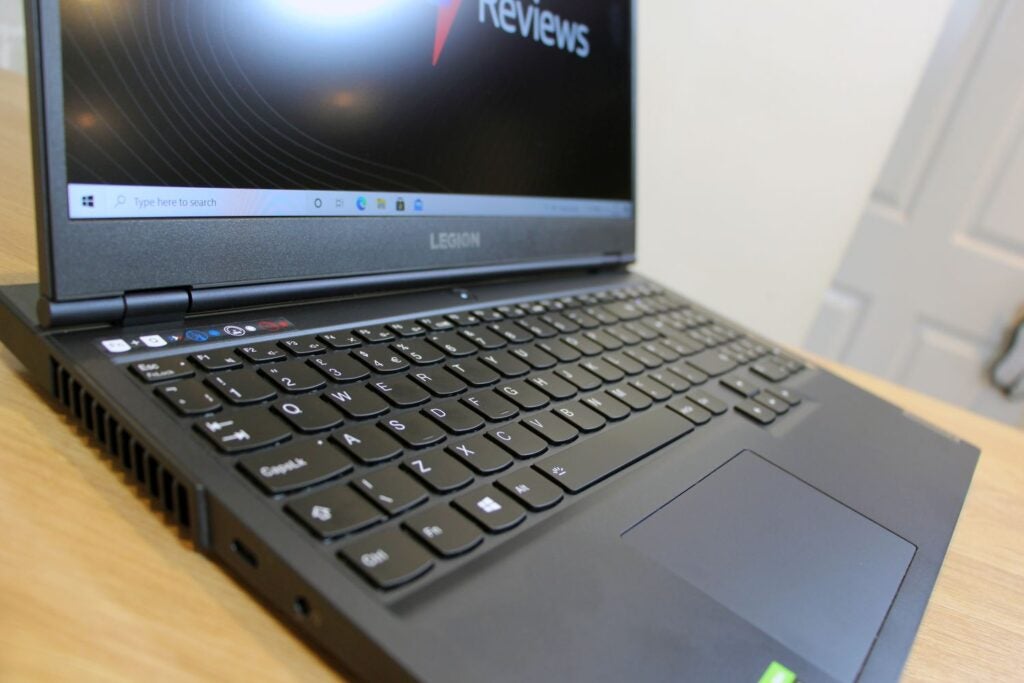
The understated looks are no surprise coming from a company with as much business pedigree as Lenovo – and the decent build quality is no shock either. The Legion is sturdy in all departments, and easily up to the challenge of travelling between bags, rooms and bedrooms.
As usual, Lenovo delivers a great keyboard: the buttons deliver a great balance between the snappiness required for gaming and the softness needed for longer typing sessions. The buttons are fast and consistent, too. The layout is solid: there’s a numberpad, and the full-size cursor keys are separated from the rest of the unit.
There’s one final practical area where the Lenovo excels: its port selection. The Legion has four full-size USB 3.2 Gen 1 ports and two USB 3.2 Gen 2 Type-C connectors, with most of those installed around the back. There are more ports than rivals – and cable-tidying is easier, too.
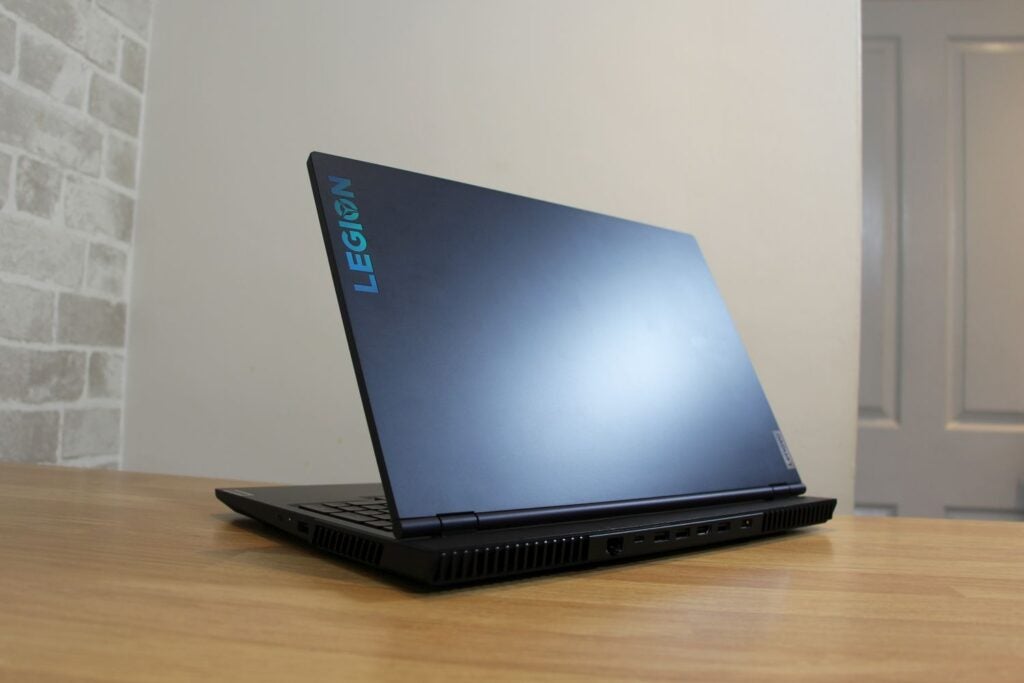
It’s a good start, but elsewhere the Legion doesn’t stack up. The keyboard has four-zone RGB LED backlighting rather than per-key backlighting, and the trackpad is mediocre – use a USB mouse instead. Use a headset or external speakers, too: the Lenovo’s audio kit is tinny and muffled.
The Lenovo’s 2.4kg weight and 25.7mm-thick body mean that this laptop is thicker and heavier than the MSI and Asus notebooks. That Asus doesn’t have a numberpad, but it does have per-key RGB LED lighting and a snappier keyboard. That laptop has better speakers and a bolder exterior too.
Screen
- Low contrast and a high black point means this display lacks depth
- Colours are not particularly accurate or vibrant
- It can handle games, but the Legion’s display looks a little washed-out
Lenovo’s 15.6in display has a 1080p resolution and a 165Hz refresh rate, and that specification is ideal for gaming – the refresh rate is quick enough to keep single-player games and eSports titles moving smoothly.
In terms of quality levels, though, the Legion disappoints. The brightness level of 328 nits is good, but it’s undermined by a black point of 0.46 nits. That creates an underwhelming contrast ratio of 713:1. In real-world use that means the display doesn’t have much depth or nuance – the brightness means you get plenty of punch, but darker areas aren’t intense and games look flat.
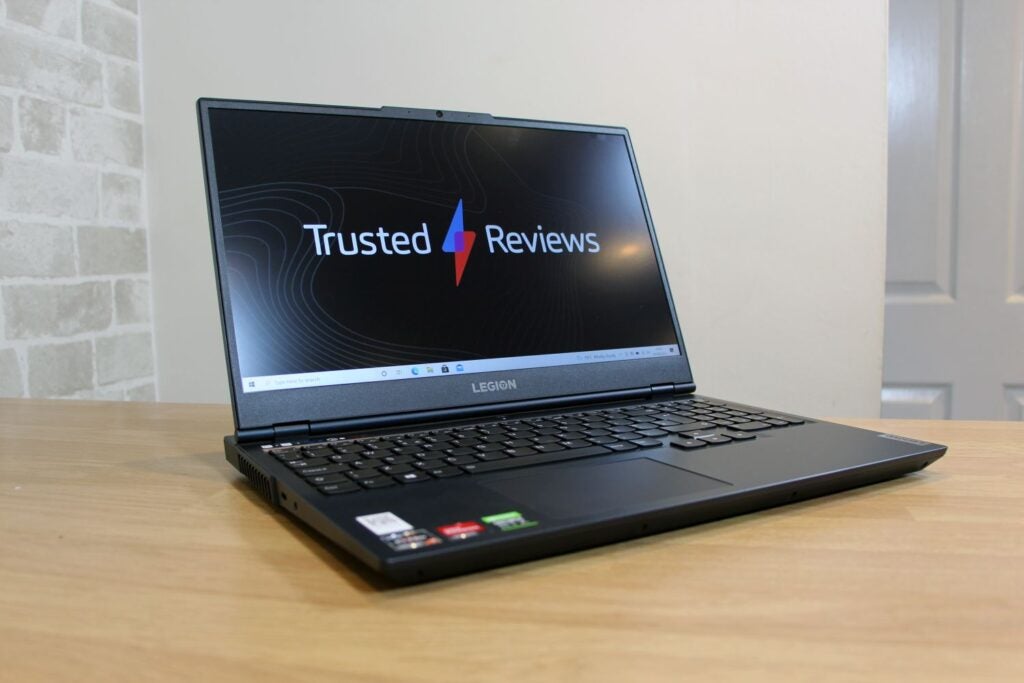
The colours are middling, too. The panel does display a decent 91.7% of the sRGB colour gamut and its Delta E of 2.39 is reasonable, but the temperature of 7809K is cool. Combine this with the low contrast figure and you’ve got a display that looks pallid.
The Lenovo’s display is good enough for gaming – the brightness level, resolution and refresh rate see to that. But the lack of contrast and colour accuracy means that games look far better on the Asus, which also added a 300Hz refresh rate into the bargain.
Performance
- The RTX 3070 is a fast and effective mainstream gaming GPU
- AMD’s Ryzen 7 5800H is perfect for mainstream work and content creation
- Lenovo’s machine kept cool and quiet, no matter the test
Nvidia’s latest laptop graphics chips run at different power levels to deliver varying levels of performance and efficiency. The GeForce RTX 3070 inside the Legion runs at 130W, which is about as high as this chip can go. Elsewhere, it’s got the usual 8GB of memory and 5120 stream processors.
The Ryzen 7 5800H is a familiarly great CPU from AMD. It’s got eight multi-threaded cores alongside base and boost speeds of 3.2GHz and 4.4GHz. The rest of the specification is entirely normal: the Lenovo has 16GB of dual-channel memory and a 512GB SSD alongside dual-band Wi-Fi 6, Bluetooth 5 and Gigabit Ethernet.
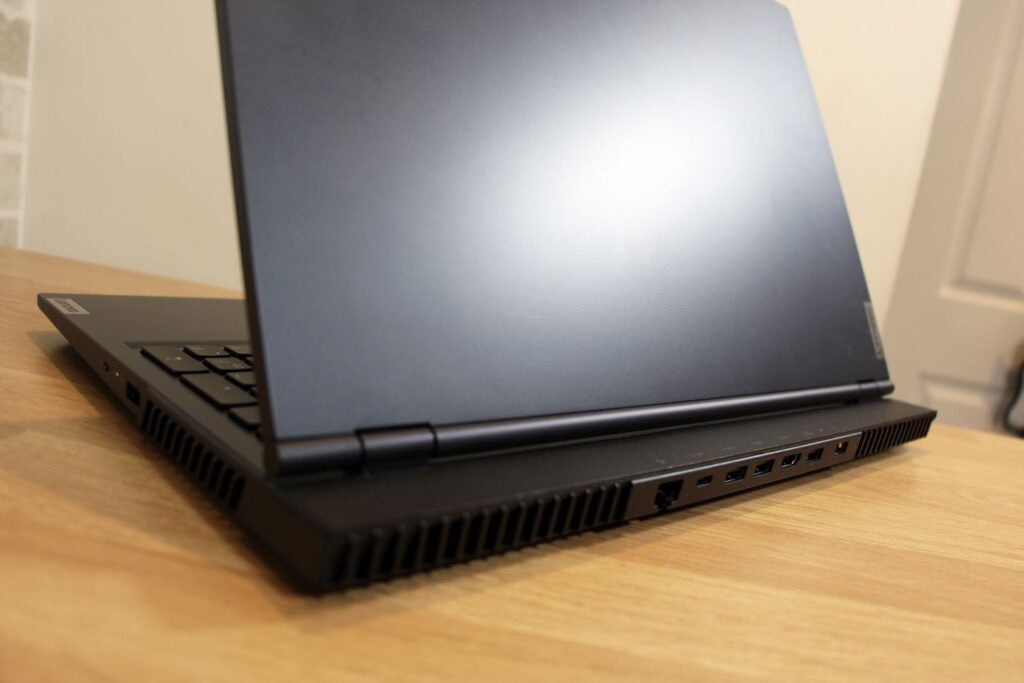
The high-power RTX 3070 delivered impressive performance. It scythed through Horizon Zero Dawn’s 1080p Ultimate benchmark at 85fps and played Borderlands 3 at 87fps. The former score is eight frames better than the Asus, and the latter is ten frames ahead. That’s great given that the Asus also has an RTX 3070 configured to 130W. The MSI had an RTX 3060, so it’s further back. The Lenovo’s 3D Mark Time Spy result of 9900 was a little quicker than the Asus’ result, too.
You’ll be able to play absolutely any of today’s biggest single-player hits on this laptop without compromising on graphics settings, and it’ll tackle ray tracing too. This machine also has the pace to handle eSports titles at the triple-figure framerates required by the 165Hz display.
| Lenovo Legion 5 (2021) | MSI Katana GF66 | Asus ROG Strix G15 G513 | |
| Processor | Ryzen 7 5800H | Intel Core i7-11800H | Ryzen 7 5800H |
| Geekbench 5 (single / multi) | 1404 / 7197 | 1537 / 6556 | 1380 / 7086 |
| PCMark 10 | 7038 | 6138 | 6406 |
| GPU | Nvidia RTX 3070 | Nvidia RTX 3060 | Nvidia RTX 3070 |
| 3DMark Time Spy | 9900 | 6907 | 9769 |
The eight-core AMD processor is brilliant. Its PCMark 10 result of 7038 is more than 600 points ahead of the Asus, which used the same chip to lesser affect. Lenovo’s laptop scored 1404 and 7197 in the Geekbench tests, with both results also outpacing Asus. This chip is even further ahead of the Intel Core i7-11800H used in the MSI.
The AMD processor can tackle photo-editing, mainstream video work and other demanding content-creation tasks, and it’ll zip through Office tasks and loads of browser tabs without complaint. You’ll only need a better processor if you want to tackle really demanding work, like 4K video editing or professional design.
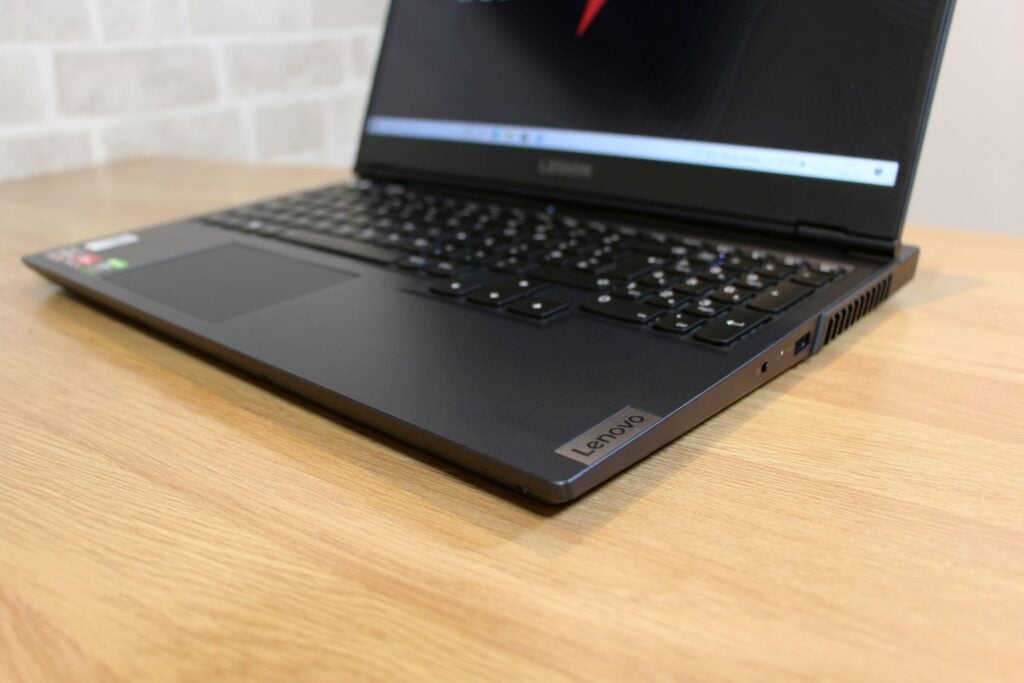
The final piece of the puzzle is the SSD, which returned decent read and write speeds of 3594MB/s and 1681MB/s, which means it can save and load data on the physical drive at a healthy pace.
The Legion doesn’t make too much noise either – there’s fan noise present when you play games or push the hardware, but it’s not irritating or problematic. Temperatures were fine on the inside and outside, and there were no throttling issues. It’s just as good as the Asus and MSI here.
Battery Life
- At its best for gaming when connected to the power source
- It delivered middling battery life in work and video-playback tests
The battery offers reasonable longevity, but it’s not great. During a gaming test it lasted for one hour and nineteen minutes, and when running an everyday work benchmark the Lenovo ran out of juice after 5hrs 42mins. Its video playback result was 90 minutes more than its work lifespan.
That’s miles better than the cheaper MSI, but the Asus lasted for seven and a half hours during a work test and two hours more when playing video. The Legion will get you through to lunch, but it’s best to stick to the mains if you want to play games and best to consider the Asus if you want more cable-free freedom.
Latest deals
Should you buy it?
You’re hunting for a fast and subtle gaming notebook: The Lenovo has a great performance inside a smart, robust chassis that’s got a great keyboard. It’s ideal if you want a gaming laptop that won’t shout about it.
You’d like a high-quality screen or a bold design: The Legion has a passable display, but it’s not great. Other people may want a bolder, slimmer or lighter design – even if they’ve got to pay for it
Final Thoughts
The Lenovo Legion 5 offers well-balanced performance and a great keyboard inside a smart case, and it’s sometimes available at very low prices – so it’s a versatile gaming option. But you’ll want a different laptop if you need good screen quality, lengthy battery life or a lighter notebook.
How we test
Every gaming laptop we review goes through a series of uniform checks designed to gauge key things including build quality, performance, screen quality and battery life.
These include formal synthetic benchmarks and scripted tests, plus a series of real world checks, such as how well it runs when running a AAA game.
We use every laptop we review as our main device for at least a week.
We use both synthetic benchmark and real-world tests to gauge performance.
We use a colorimeter and the naked eye to evaluate the screen.
We use a benchmark test and our own use to determine battery life.
FAQs
The Legion is protected by a one-year deal, although you can pay for upgrade options.
The Lenovo Legion 5 lasted 5hrs and 42mins in our benchmark test for day-to-day use, but only managed 1 hour and 19 minutes.
No, the Lenovo Legion 5 is limited to a 1080p display.
Jargon buster
Ray Tracing
Advanced light-rendering technology that allows for more realistic lighting and shadow effects within in-game worlds.DLSS
Deep learning super sampling is Nvidia’s image upscaling technology which can improve a game’s framerate without reducing the quality of the visuals.Nits
The brightness level of a display. 300 nits is regarded as the minimum target for high-end screens.








